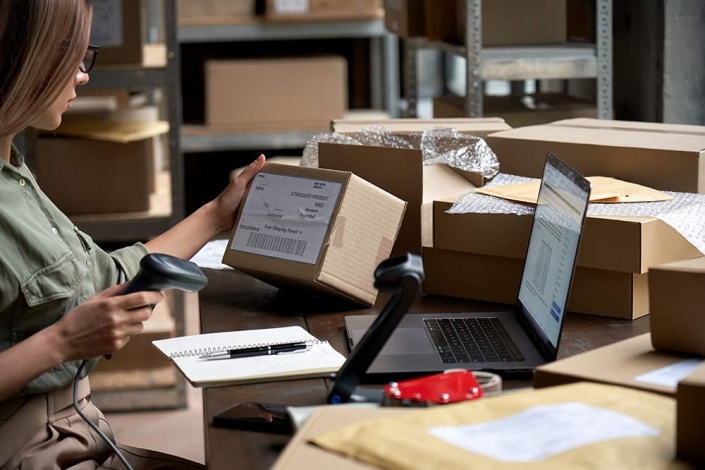
Retailers and brands alike are under ever-increasing pressure to provide a seamless customer experience when shoppers buy online. Stores carry less inventory and expect their suppliers to be equipped to ship directly to consumers in an efficient way. Not to mention quickly. To capitalize on the opportunities online sales create, it’s important to know how to handle fulfillment in less time and without errors. Companies that want to enjoy growth through direct-to-consumer orders should know these four keys to efficient dropshipping.
- Update inventory counts regularly. Without seeming like Captain Obvious, it’s difficult to ship products to consumers quickly and efficiently if those products are not present in your warehouse. Real-time reporting of stock levels will ensure that a buyer does not purchase an item that isn’t currently stocked or has been discontinued.
The Inventory Inquiry/Advice (EDI 846) is often a critical element when communicating inventory with retail trading partners. Your EDI software and provider should be well-versed in using it efficiently, and understand how often the retailer wants it sent. Some retailers will expect an EDI 846 update daily.
Used well, the EDI 846 offers transparency and visibility to both parties—retailer and supplier. That’s valuable. It allows retailers to avoid disappointing shoppers, and it helps suppliers build productive, valuable relationships with their trading partners.
Today’s consumers are demanding and impatient. If they’re forced to wait for a product because it’s not currently available, chances are they will get it from another merchant. Retailers can also use accurate inventory reporting to fuel demand for your items. When stock is low, they can add copy to their web site that says, “Only three left!” A sense of urgency is good for their sales—and yours.
- Ship fast. How fast? Well, let’s just say that you really can’t get it there quickly enough. Today’s consumers have been conditioned by Amazon and others to receive products the next day or even the same day. They may not expect that level of efficiency from every retailer, but they have little patience for buying a product and then being forced to wait weeks for its arrival. In fact, 25% of shoppers have canceled an order because of slow delivery speeds.
They are also far less likely to return to a retailer, one that may be featuring your products prominently on a web site, if they wait for a product longer than they expect.
- Automate the process. In addition to speed, your trading partners will expect direct-to-consumer orders to arrive on doorsteps in a way that reflects well on them. That means error-free shipments, often delivered with the brand marks of the retailer.
So how can you meet the specific requirements of your trading partners without consuming hours of valuable time getting things just right? Automation is key. A powerful EDI and order processing platform should move information seamlessly from one intake point to another point in the process. In other words, manual copy-and-paste actions increase the likelihood of mistakes, while automation virtually eliminates it.
Automation can also help suppliers create key items like retailer-branded packing slips. You and your team won’t be forced to double-check every order—the proper initial setup of the retailer in your system will generate the necessary labels and packing slips automatically.
When you’re shipping lots of items to many different addresses—unlike a large wholesale order that may go to a single store or distribution center—getting the right information to your shipping providers is essential. Fact is, 38% of shoppers will never shop with a retailer again if they have a poor delivery experience, and that can definitely include being forced to track down an item that was sent to the wrong address.
Your EDI and order processing platform should have built-in connections to automate shipping and get all the details right.
- Choose the right 3PL provider. If you’re a growing brand, you will reach a break point when shipments from your initial location—the garage, the dining room, the shed—will stop making sense. Instead of establishing your own warehouse operation to move orders and direct-to-consumer shipments, outsourcing to a quality 3PL provider will make sense.
When you do, you’ll want to make sure your 3PL partner is a good fit for your company. Do they have experience handling direct-to-consumer shipments to your roster of trading partners? Do they know the requirements of your category? Can your EDI platform integrate with their software system? A responsive, reliable 3PL provider will become a welcome component of your approach to drop shipping.
Looking forward, retailers are only going to require more suppliers to ship directly to consumers, and expect brands to carry the inventory as well. Suppliers that manage this process well and monitor these four keys to efficient dropshipping, will build relationships with trading partners that are productive and profitable.






